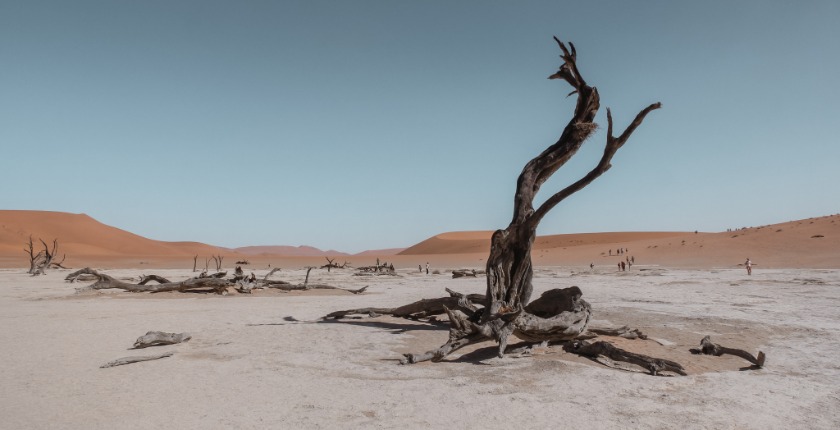Interviews - November 9, 2018
"The fight against climate change is a moral issue", interview with François Gemenne


Written by Tristan Lebleu 3 min read
The effects of climate change on society, the economy and the environment are often mentioned in the future. However, climate change is already having a direct impact on many people, who are forced to flee the degradation of their environment. They are "climate refugees". For nearly 15 years, François Gemenne, researcher and Professor, has been studying the effects of climate change on migration flows.
What is a climate refugee?
This term refers to any person who is forced to leave his place of residence due to the degradation of his environment. This environmental degradation can be abrupt, particularly due to natural disasters, or it can be slower, such as rising sea levels, or progressive land degradation.
Can we really isolate climatic factors for migration from other factors?
No, they are indeed often also linked to political or economic factors. It is therefore difficult to define environmental refugees as a specific category independent of others. Today, migration factors are increasingly intertwined and it is difficult to isolate one of them. Moreover, the notion of climate refugee does not exist in international law and therefore this term, which is sometimes used in common vocabulary, does not correspond to a legal reality.
So many people considered as economic refugees could also be considered as climate refugees?
That's right. In sub-Saharan Africa, half of the population depends directly on subsistence agriculture as their main source of income. This means that some economic migrants arriving in Europe (in Italy, Greece, Spain...) are also environmental migrants. It is a rather Western vision to separate environmental and economic issues. Our salaries do not depend on the weather conditions during the month. On the contrary, for many people, any variation in temperature, or rainfall, has an immediate impact on their economic resources. They are directly dependent on the environment.
How many people are forced to move for climatic reasons?
Every year, about 25 million people are displaced by sudden environmental degradation. There are three times as many people displaced by natural disasters as by war and violence. To this figure, it is necessary to add those who are displaced by slower degradation of their environment. But these movements are rather short distances, and are very spread out in time and space. They are therefore not counted by statistics. With regard to future trends, the World Bank published a study at the beginning of the year, according to which the number of internally displaced people - people who migrate within their own country - would increase by 140 million as a result of climate change-related degradation by 2050.
Where do climate refugees migrate to?
Most environment-related migration is internal. In the case of environment-related migration, people generally do not seek to leave their country, but rather to find shelter. Moreover, in general, contrary to what many people think, most of the world's migrations takes place within countries. Another common misconception about migrants is that it is always the poor who go the furthest when in reality it is exactly the opposite. Moving around requires a lot of resources. As a result, it is often the poorest and most vulnerable who find themselves trapped.
Are there any conflicts related to these displacements?
Yes, very much so. There is an increasingly strong link between climate and security issues. There are two phenomena: migration causes security problems and conflicts, and climate-related conflicts also cause migration and population displacement. This is particularly the case in the Horn of Africa, for example in Somalia or Southern Sudan, where many conflicts are related to resource issues, whether food or land.
What are the main populations affected by the effects of climate change?
Those who pollute are generally not those who are affected by climate change. In this respect, there is a great injustice, both geographical and generational. There is no direct relationship between a country's greenhouse gas emissions and the impacts of climate change that this country will experience. Nor is there a direct relationship between the greenhouse gas emissions of a generation and the impacts of climate change that this generation will experience. There is a gap of about 50 years between greenhouse gas emissions and their impact on the climate. We must therefore not act for ourselves but for others beyond our borders. This raises the fight against climate change as a moral issue.
Beyond the fight against climate change, what solutions can help climate refugees?
There have been several notable advances in this area in recent years. Since 2012, Norway and Switzerland have adopted the Nansen initiative, named after the polar explorer who was also the first United Nations Commissioner for Refugees. This intergovernmental initiative consisted of a consultation with the governments of different countries to ask them specifically about their needs and possible commitments. The result was a catalogue of measures and good practices signed by 110 States in October 2015. This initiative gave rise to the Platform on Disaster Displacement, an international organisation that is responsible for ensuring that these principles are applied.

Written by Tristan Lebleu on November 9, 2018
